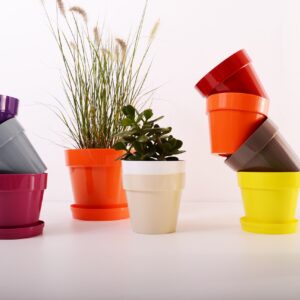
Exploring the world through an herb garden is a delightful way to connect with different cultures, flavors, and aromas. Here are some details on how to create and enjoy an herb garden that allows you to experience the world of culinary herbs:
- Selecting Herbs:
- Research herbs commonly used in various international cuisines. Examples include basil (Italian cuisine), cilantro (Mexican cuisine), thyme (French cuisine), oregano (Mediterranean cuisine), lemongrass (Thai cuisine), and mint (Middle Eastern cuisine).
- Choose herbs that are suitable for your climate and growing conditions.
- Consider the culinary preferences of your household and the versatility of the herbs in different dishes.
- Planning Your Herb Garden:
- Determine the available space for your herb garden, whether it’s a dedicated outdoor plot, raised beds, containers, or even a sunny windowsill.
- Ensure the chosen location receives adequate sunlight (at least 6 hours per day) and has well-drained soil.
- Group herbs with similar growing requirements together to optimize care and maintenance.
- Preparing the Soil:
- Clear the selected area of any weeds or debris.
- Amend the soil with compost or organic matter to improve fertility and drainage.
- Consider performing a soil test to determine any additional amendments needed to achieve the optimal pH and nutrient levels for herb growth.
- Planting the Herbs:
- Start seeds indoors or purchase young herb plants from a local nursery.
- Follow the recommended spacing guidelines for each herb to ensure proper growth and airflow.
- Dig a hole slightly larger than the herb’s root ball, gently place the plant in the hole, and backfill with soil.
- Water thoroughly after planting.
- Care and Maintenance:
- Water your herb garden regularly, keeping the soil consistently moist but not waterlogged.
- Mulch around the herb plants to conserve moisture and suppress weed growth.
- Fertilize with organic herb fertilizers according to package instructions or apply compost as a natural fertilizer.
- Regularly inspect your herbs for pests or diseases, and address any issues promptly using organic pest control methods if necessary.
- Harvesting and Enjoying:
- Harvest herbs when they have reached their peak flavor and before flowering.
- Use sharp scissors or pruners to snip off the desired amount of leaves or stems.
- Regular harvesting promotes bushier growth and ensures a fresh supply of herbs for culinary uses.
- Exploring Culinary Uses:
- Research traditional recipes from different cuisines that feature the herbs you’ve grown.
- Experiment with new flavors and dishes by incorporating herbs into your cooking.
- Consider making herb-infused oils, vinegars, or herb blends to enhance your culinary creations.
- Learning and Sharing:
- Expand your knowledge of herbs by reading books, exploring online resources, or joining local herb societies or gardening clubs.
- Share your herb garden experiences and recipes with friends and fellow herb enthusiasts.
By creating an herb garden that focuses on culinary herbs from around the world, you can embark on a flavorful journey and bring the essence of global cuisines into your own kitchen. Enjoy the diversity of tastes and aromas as you explore different herbs and their culinary applications.




